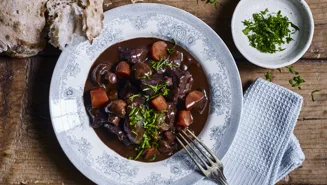
No, Greek yoghurt is not lactose-free. While it does contain less lactose than regular yoghurt due to its production process, it is not lactose-free unless it has been produced specifically to remove all lactose.
Greek yoghurt and Greek-style yoghurt are made by fermenting and then straining regular yoghurt to remove the liquid whey, which results in a thicker, creamier texture. This yoghurt primarily comprises milk, live active cultures, and, in some cases, stabilisers or thickeners. A significant amount of lactose, a naturally occurring sugar in milk, gets removed during the straining process.
How much lactose is in Greek yoghurt?
Greek yoghurt usually contains about 3-4 grams of lactose per 100 grams. However, the exact content can vary. For instance, 2 % fat Greek-style yoghurt contains about 2.5 grams of lactose per 100 grams, while the 10 % fat version has about 3 grams.
In comparison, regular yoghurt has about 4-6 grams of lactose and milk contains about 5 grams of lactose per 100 grams, depending on the specific type.
The unique straining process associated with Greek yoghurt production is what causes its reduced lactose content.
Greek style yoghurt vs. Greek yoghurt
Before delving into how lactose-free Greek yoghurt is made, it is crucial to distinguish between ‘Greek yoghurt’ and ‘Greek-style yoghurt’. At Arla, we produce Greek-style yoghurt, emulating the rich texture and tangy flavour of traditional Greek yoghurt. However, there is an essential difference between these products.
Authentic Greek yoghurt refers not just to its consistency or preparation method but also to its place of origin. Only yoghurt produced in Greece can be labelled ‘Greek yoghurt’.

How to make lactose-free Greek yoghurt?
Lactose-free Greek yoghurt production involves specific methods that differentiate it from traditional yoghurt-making. There are two primary ways to make it: using lactose-free milk or introducing lactase enzymes to regular milk.
The process begins by heating the chosen milk – whether it is lactose-free or enriched with lactase enzymes – to 85°C.
Once the milk has reached this temperature, it is cooled to between 43-46°C.
At this cooler temperature, a yoghurt starter culture is introduced to begin the fermentation process.
Then it is left to ferment undisturbed, allowing it to thicken and develop the signature tangy flavour and thick, creamy texture of Greek yoghurt and Greek-style yoghurt.
After fermentation, the yoghurt undergoes a straining process to refine its consistency further.
Then it is chilled to the optimal storage temperature.
And finally all that is left is to enjoy it as a delicious snack, a base for dips and dressings, or with some fresh fruit and granola for a satisfying breakfast.
You can read more about producing lactose-free products in our articles ‘What is lactose-free milk?’, ‘Is yoghurt lactose-free?’, and ‘Is lactose-free dairy-free?’.







































